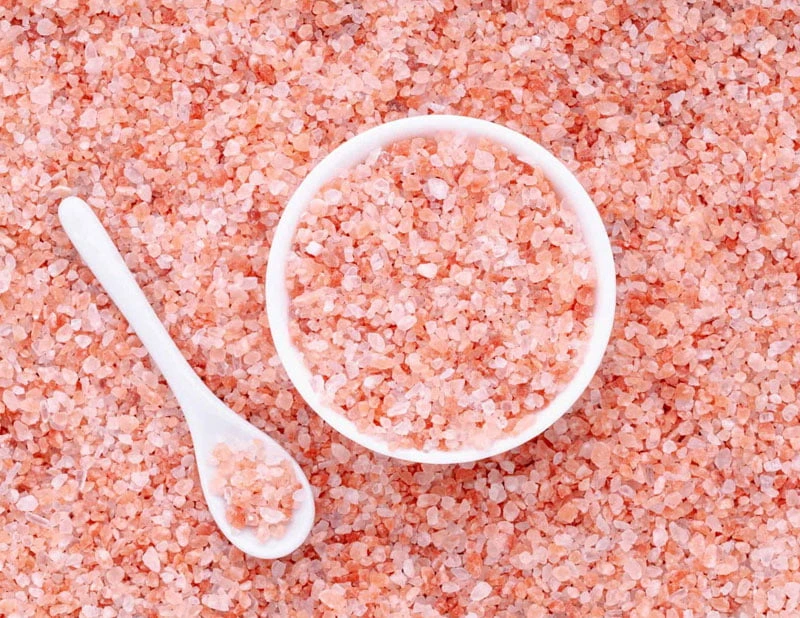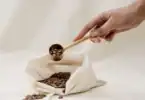In recent years, Himalayan pink salt has gained popularity as a “gourmet” salt, with many people claiming that it is superior to regular table salt in terms of taste. Some even believe that Himalayan salt is more nutritious than other types of salt because it contains trace amounts of minerals that may be beneficial, though we lack real scientific data to back that up.
Still, Himalayan salt has created a buzz and fascination among home chefs so, in this article I wanted to explore the color of Himalayan salt: how it gets its pink hue and if that impacts your cooking.
Why Is Himalayan Salt Pink?
Himalayan salt gets its pink hue from a combination of minerals including iron, potassium, and magnesium, as well as trace amounts of other elements such as calcium and bromine.
The iron present in Himalayan salt is the biggest contributor towards giving it that characteristic pink color. Iron is a naturally occurring element that is found in many rocks and minerals, including salt. When iron is present in high concentrations, it can give a pink or reddish color to the salt. Depending on the trace elements, the salt can even take on an orange-y tone.
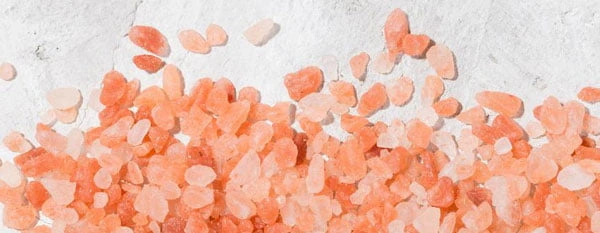
Other minerals present in Himalayan salt, such as potassium and magnesium, can also contribute to its color. These minerals are not as abundant as iron in Himalayan salt, but they can still affect the overall color. In addition to these minerals, Himalayan salt may also contain trace amounts of other elements that can contribute to its color, such as calcium and bromine.
Analysis of Himalayan Pink salt have shown that there can be up to 84 different elements in the salt. Sodium Chloride (the same salt as regular table salt) makes up about 98.4% of the salt, with the rest of the contents consisting of all those other minerals. If you’d like to know more about this subject, see our article Minerals In Himalayan Salt: Let’s See What’s In There.
Why Are Some Bottles Of Himalayan Salt More Pink Than Others
With Himalayan salt being a naturally mined material, it’s possible that salt mined from different locations or depth will contain varying amounts of the iron oxide that gives it pink color. Salt with more iron will be more pink than salt with less iron.
Frankly, seeing a variety of color tones in the salt is just plain pretty.

I imagine that producers of this salt select salt from different places in the mine to get some color variation. As the salt is ground to the desired consistency, the different colors get mixed together as shown in this ceramic salt grinder that came filled with Himalayan salt.
Sometimes you can find Himalayan Pink salt at higher end grocery stores or food specialty shops. If you are having trouble locating some to try it out, here is an online suggestion that I like:
If you are looking for a way to try out a small amount of Himalayan Pink salt to see if you like it, this 8 ounce bottle that has a ceramic grinder on the top is a nice option. You can use the grinder to dispense finely ground salt onto your food as a finishing salt. If you have a recipe or purpose that needs coarse grains, the top easily unscrews. This also means that you can refill the bottle with more salt later!
Is the Pink Color Of Himalayan Salt Natural or Artificial?
The pink color of Himalayan salt is natural and is not artificially added or enhanced in any way but derives its hue from a variety of minerals present in the mining location, primarily iron. Iron oxide is the same mineral that gives clay it’s red color: think of a terra cotta pot, for example.
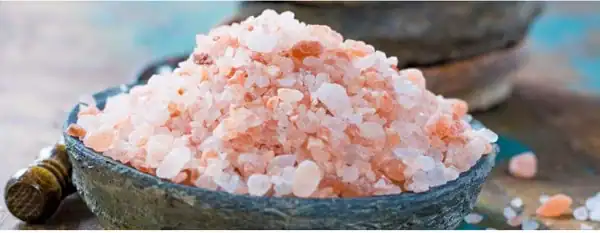
Is Himalayan Salt Always Pink?
While Himalayan salt is most commonly known for its pink color, it is possible to find it in other colors as well, usually in shades or pale orange to yellow. More extreme examples include Himalayan black salt and Himlayan red salt.
Himalayan black salt can range from dark purple or black in color and is used in Indian cuisine. Himalayan red salt is mixed with iron oxide (and other additives) which deepens its color and can intensify it’s flavor.
What Would Make Himalayan Salt Black or Red?
Himalayan black salt is also known as “kala namak” and is used in Indian cuisine. It is made by mixing pink Himalayan salt with a combination of seeds, berries, charcoal and sulfur, then heating it to a high temperature and then cooling it rapidly. The heating and cooling process causes the salt to change color and develop a distinctive sulfur-like flavor and aroma. For more details about the different colors of Himalayan salt, and the process of making the black version, see our article Taste The Rainbow: How The Color Of Himalayan Salt Affects Its Flavor.
Himalayan red salt is another type of salt that is reddish in color. Once again, iron oxide, which is a natural pigment gives the salt a reddish color. While there are locations in the mine where the red color happened naturally, the demand for red salt sometimes results in amending pink salt with additional iron oxide to intensify the color tone.
For more discussion around culinary salt and color variations that affect the flavor of the salt, you might be interested in: Worth It’s Salt: 20 Different Types of Salt.
Does Himalayan Salt Have Any Special Nutritional Compared To Other Salts?
Some people claim Himalayan salt has certain health benefits or higher nutritional value over other types of salt, usually comparing it to normal table salt. The thought is that the minerals contained in Himalayan pink salt give it a boost; however, these claims are not supported by scientific evidence.
In terms of its nutritional value, Himalayan salt is similar to other types of salt and contains approximately the same amount of sodium as regular table salt by weight. It is not a significant source of nutrients and should be used in moderation as part of a balanced diet. The general consensus is that since the daily consumption (and requirement for) sodium is about one teaspoon, the tiny bit of trace elements in that amount are fairly insignificant in overall nutrition.
There is also no scientific evidence to support the use of Himalayan salt for medicinal purposes. While some people claim that Himalayan salt can be used to treat a variety of health conditions, there is no reliable scientific evidence to support these claims. Before listening to anything a website tells you, consult with a healthcare provider before using any type of salt for medicinal purposes.
Does The Color of Himalayan Pink Salt Affect the Taste?
The color of Himalayan salt does not affect its taste appreciably. Some people think that it tastes a little milder or a little more ‘earthy’ than regular table salt.
Himalayan salt can be used in the same way as regular table salt and is generally used to add flavor to food. It can be used in cooking, as a finishing salt, or as a seasoning for various dishes. The taste of Himalayan salt is similar to that of other types of salt.
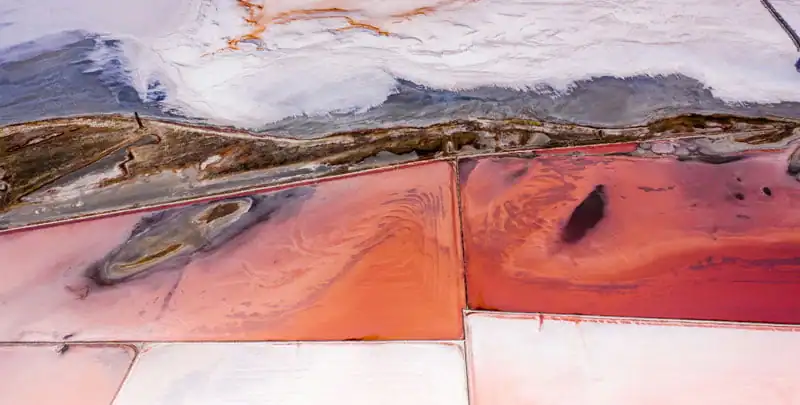
Is Himalayan Pink Salt the Only Type of Pink Salt?
Himalayan salt is not the only type of pink salt that is available. There are several other types of pink salt that are produced in different parts of the world, and these salts may vary in terms of their color, taste, and other characteristics.
Here is a short list of other pink or reddish salts:
- Peruvian
- Indian
- Hawaiian (often called Alaea Red salt)
- Australian
- French
If you are looking for the perfect Salt Cellar to store your pink salt or are considering getting a ceramic grinder like the one in my pictures, be sure to see Salt Storage: Choosing a Salt Cellar, Salt Grinder, and More for suggestions.
Table of Contents
Ocean Salt pan Photo by Mikhail Nilov

